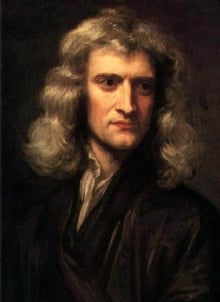Mathematical Principles of Natural Philosophy, often called simply the Principia, is a work in three books by Sir Isaac Newton. The first book contains the famous three laws of motion and the law of universal gravitation, while the second and third books apply these laws to a detailed description of the motion of celestial and terrestrial bodies.
 Isaac Newton, born in 1643, as he discovered laws of motion, invented calculus, and revolutionized physics. Dive into his quotes!
Isaac Newton, born in 1643, as he discovered laws of motion, invented calculus, and revolutionized physics. Dive into his quotes!
More about Isaac Newton